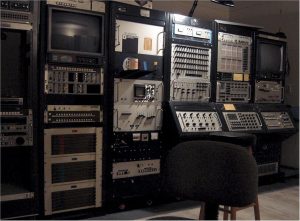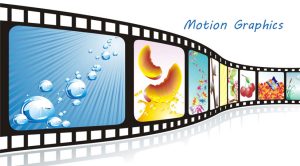
WHAT MOTION GRAPHICS ENTAILS
What motion graphics entails. These are visuals that move. It’s the simplest definition conceivable. The relationship between movement and design aspects is made easier to understand by the fact that motion graphics is frequently also referred to as motion design. The goal of motion graphics is to apply design principles to new media by incorporating time and space to produce movement. However, it’s not easy to make design pieces come to life. In contrast to other animation disciplines, there is no set or “natural” method for animating objects or things.
MOTION GRAPHICS
Motion graphics have become a powerful medium for visual storytelling, captivating audiences with dynamic animations, stunning visuals, and seamless integration of text and graphics. In this article, we’ll dive into the fascinating world of motion graphics, exploring its origins, applications, and the creative possibilities it offers.
What does it mean?
Animated graphics that combine sound, visual effects, and movement to improve narrative, elicit strong feelings, and transmit information are called motion graphics. As opposed to conventional animation, which frequently include characters and storylines. They are are primarily concerned with animated graphical elements—such as typography, shapes, and imagery that provide captivating visuals.
Origins of Motion Graphics

They have their origins in the early stages of cinema. where moving images were produced using methods like optical effects and stop-motion animation. With the advent of computer technology and digital animation software in the late 20th century. It evolved into a distinct art form, finding applications in film, television, advertising, and digital media.
Applications of Motion Graphics:
Many different media outlets and sectors use it, including:
1. Advertising

MOTION GRAPHICS
They are a popular choice for advertising campaigns, allowing brands to convey messages and showcase products in visually compelling ways. From animated logos to explainer videos, it help brands stand out and engage audiences in crowded markets.
2. Film and Television

WHAT MOTION GRAPHICS ENTAILS
It plays a crucial role in film and television productions, from title sequences and visual effects to informational graphics and animated infographics. They help set the tone, enhance storytelling, and create immersive viewing experiences for audiences.
3. Digital Media
In the digital age, motion graphics are everywhere, from social media posts and website banners to online presentations and interactive content. They grab attention, convey information quickly, and drive engagement, making them an essential tool for digital marketers and content creators.
4. Education and Training

They are also used in educational and training materials to explain complex concepts, visualize data, and engage learners. Animated tutorials, instructional videos, and interactive simulations help make learning more accessible and engaging.
Creative Possibilities:
One of the most exciting aspects of it is its creative versatility. With the right tools and imagination, it’s artists can bring virtually any idea to life. From abstract animations and experimental art to corporate branding and commercial projects, the possibilities are endless.
Motion graphics artists use a variety of software tools, including Adobe After Effects, Cinema 4D, and Blender. To create stunning visual effects, intricate animations, and seamless motion sequences. They combine design principles such as typography, color theory. And composition with animation techniques such as keyframing, easing, and timing to craft compelling motion graphics.
Summary
Motion graphics are a dynamic and versatile medium for visual storytelling, offering endless creative possibilities across industries and media platforms. Whether you’re a seasoned animation graphics artist or just starting out. Exploring it’s world opens up a world of creativity, innovation, and artistic expression. So grab your tools, unleash your imagination, and dive into it’s exciting world!